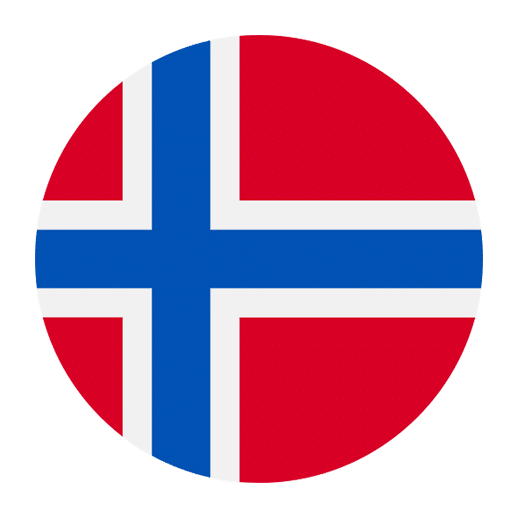Learning a new language can be both an exciting and challenging journey. When it comes to Norwegian, understanding the basic building blocks such as pronouns and possessives is crucial for effective communication. Whether you are planning to visit Norway, have Norwegian heritage, or simply love the challenge of learning a new language, this article will provide you with a comprehensive guide to Norwegian pronouns and possessives.
Personal Pronouns in Norwegian
Personal pronouns are the words we use to replace specific people or things. Just like in English, Norwegian personal pronouns are categorized by person (first, second, third), number (singular, plural), and gender (masculine, feminine, neuter).
Singular Personal Pronouns
1. **Jeg** – I
2. **Du** – You (singular, informal)
3. **Han** – He
4. **Hun** – She
5. **Den** / **Det** – It
Examples:
– **Jeg** er glad. (I am happy.)
– **Du** er snill. (You are kind.)
– **Han** er lærer. (He is a teacher.)
– **Hun** er student. (She is a student.)
– **Den** er en hund. (It is a dog.)
– **Det** er et hus. (It is a house.)
Note that **den** is used for masculine and feminine nouns, while **det** is used for neuter nouns.
Plural Personal Pronouns
1. **Vi** – We
2. **Dere** – You (plural)
3. **De** – They
Examples:
– **Vi** går på kino. (We are going to the cinema.)
– **Dere** er flinke. (You are skilled.)
– **De** er venner. (They are friends.)
Object Pronouns
Object pronouns in Norwegian function similarly to those in English. They are used to replace the object of a sentence.
Singular Object Pronouns
1. **Meg** – Me
2. **Deg** – You (singular, informal)
3. **Ham** / **Han** – Him
4. **Henne** – Her
5. **Den** / **Det** – It
Examples:
– Kan du hjelpe **meg**? (Can you help me?)
– Jeg ser **deg**. (I see you.)
– Jeg gir boken til **ham**/**han**. (I give the book to him.)
– Hun elsker **henne**. (She loves her.)
– Jeg trenger **den**. (I need it – masculine/feminine noun.)
– Jeg trenger **det**. (I need it – neuter noun.)
Plural Object Pronouns
1. **Oss** – Us
2. **Dere** – You (plural)
3. **Dem** – Them
Examples:
– Han ser **oss**. (He sees us.)
– Vi besøker **dere**. (We visit you.)
– Jeg liker **dem**. (I like them.)
Reflexive Pronouns
Reflexive pronouns are used when the subject and the object of a sentence are the same. In Norwegian, reflexive pronouns are used similarly to those in English.
1. **Meg** – Myself
2. **Deg** – Yourself (singular, informal)
3. **Seg** – Himself/Herself/Itself
4. **Oss** – Ourselves
5. **Dere** – Yourselves
6. **Seg** – Themselves
Examples:
– Jeg ser **meg** i speilet. (I see myself in the mirror.)
– Du må vaske **deg**. (You need to wash yourself.)
– Han skadet **seg**. (He hurt himself.)
– Vi må beskytte **oss**. (We must protect ourselves.)
– Dere må hjelpe **dere**. (You must help yourselves.)
– De tenker på **seg**. (They think about themselves.)
Possessive Pronouns
Possessive pronouns indicate ownership or possession. In Norwegian, possessive pronouns change based on the gender and number of the noun they are describing.
Singular Possessive Pronouns
1. **Min** / **Mi** / **Mitt** – My, Mine
2. **Din** / **Di** / **Ditt** – Your, Yours (singular, informal)
3. **Hans** – His
4. **Hennes** – Her, Hers
5. **Dens** / **Dets** – Its
Examples:
– **Min** bil (My car – masculine/feminine noun)
– **Mi** bok (My book – feminine noun, less common usage)
– **Mitt** hus (My house – neuter noun)
– **Din** venn (Your friend – masculine/feminine noun)
– **Di** datter (Your daughter – feminine noun, less common usage)
– **Ditt** barn (Your child – neuter noun)
– **Hans** hund (His dog)
– **Hennes** katt (Her cat)
– **Dens** farge (Its color – masculine/feminine noun)
– **Dets** navn (Its name – neuter noun)
Plural Possessive Pronouns
1. **Vår** / **Vårt** / **Våre** – Our, Ours
2. **Deres** – Your, Yours (plural)
3. **Deres** – Their, Theirs
Examples:
– **Vår** bil (Our car – masculine/feminine noun)
– **Vårt** hus (Our house – neuter noun)
– **Våre** venner (Our friends – plural noun)
– **Deres** lærer (Your teacher – plural you)
– **Deres** barn (Their children)
Possessive Adjectives
Possessive adjectives function similarly to possessive pronouns but are used directly in front of the noun they modify. They also change based on the gender and number of the noun.
1. **Min** / **Mi** / **Mitt** / **Mine** – My
2. **Din** / **Di** / **Ditt** / **Dine** – Your (singular, informal)
3. **Hans** – His
4. **Hennes** – Her
5. **Dens** / **Dets** – Its
6. **Vår** / **Vårt** / **Våre** – Our
7. **Deres** – Your (plural)
8. **Deres** – Their
Examples:
– **Min** bil, **mi** bok, **mitt** hus, **mine** venner (My car, my book, my house, my friends)
– **Din** venn, **di** datter, **ditt** barn, **dine** bøker (Your friend, your daughter, your child, your books)
– **Hans** bok (His book)
– **Hennes** katt (Her cat)
– **Dens** farge, **dets** navn (Its color, its name)
– **Vår** bil, **vårt** hus, **våre** venner (Our car, our house, our friends)
– **Deres** lærer (Your teacher – plural you)
– **Deres** barn (Their children)
Common Mistakes and Tips
Understanding and using pronouns and possessives correctly in Norwegian can be tricky, especially for beginners. Here are some common mistakes and tips to avoid them:
1. **Gender Agreement**: Make sure the possessive pronoun agrees with the gender of the noun.
– Incorrect: Min bok (My book – if the noun is feminine and you are using the less common form)
– Correct: Mi bok (My book – feminine noun)
2. **Number Agreement**: Ensure the possessive pronoun agrees with the number of the noun.
– Incorrect: Mine bil (My car – if the noun is singular)
– Correct: Min bil (My car – singular noun)
3. **Reflexive Pronouns**: Use reflexive pronouns when the subject and object are the same.
– Incorrect: Jeg ser meg selv i speilet. (I see myself in the mirror – using “meg selv” is redundant)
– Correct: Jeg ser meg i speilet. (I see myself in the mirror)
4. **Using the Right Form**: Be cautious about using “din” and “dere” correctly.
– Incorrect: Din venn (if you mean “your friend” addressing multiple people)
– Correct: Deres venn (Your friend – addressing multiple people)
Practice Makes Perfect
The best way to master Norwegian pronouns and possessives is through consistent practice. Here are some exercises to help you get started:
1. **Translation Exercise**:
– Translate the following sentences into Norwegian:
1. I love my cat.
2. You see him every day.
3. They are our friends.
4. She gave me the book.
5. This is their house.
2. **Fill in the Blanks**:
– Fill in the blanks with the correct pronoun or possessive:
1. Jeg ser ______ (him).
2. Hun elsker ______ (her) katt.
3. Dette er ______ (our) bil.
4. Vi snakker med ______ (them).
5. ______ (You, plural) er flinke.
3. **Conversation Practice**:
– Write a short dialogue using as many pronouns and possessives as possible. Practice it with a language partner or tutor.
Conclusion
Understanding and using Norwegian pronouns and possessives correctly is fundamental for effective communication. While the rules might seem overwhelming at first, with regular practice and immersion, you’ll find yourself becoming more comfortable and fluent. Remember, language learning is a journey, and every step you take brings you closer to proficiency. Happy learning!

